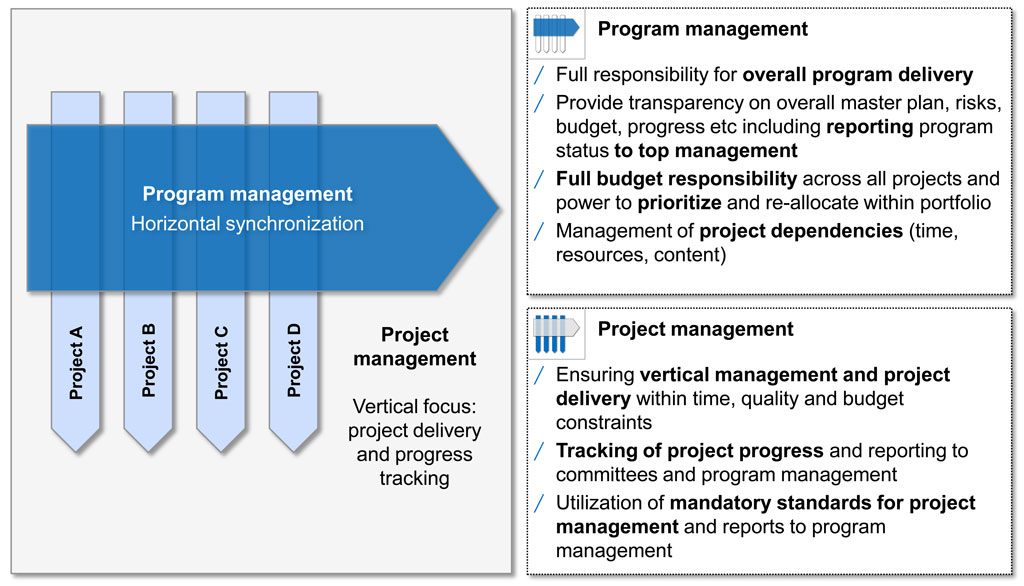The combination of regulatory requirements, which have expanded for years, and the continuing low interest-rate phase is putting European financial institutions under an enormous pressure to adapt. While German institutions, for example, still received approx. 80% of their operational expenditure for ongoing bank business in 2005 (“run the bank”) and invested approx. 20% in change initiatives (“change the bank”), the relationship in 2012 was already almost even. The considerable increase of “change the bank” expenditure results from a chain reaction caused by the stricter regulations for equity, liquidity buffers and risk management pursuant to Basel III, CRR / CRD IV, etc.: for example, banks not only have to adjust their management models, but also need to “tighten” their organization, processes and IT. Besides the rising costs due to regulations, the low interest-rate environment is also causing pressure on management to counteract: progressively lower profit contributions from the maturity transformation and deposit business and also cautious developments in asset management and investment banking must be counteracted by strategic developments and increases in efficiency, e.g. by restructuring the business model, focusing business segments or further standardizing and increasing the level of automation. This means that strategic, operational and managing units would be involved in transformation processes with major scope all at the same time.
The extent of these transformation processes is reflected in the budgets that European institutions call upon for restructuring. Amounts up to several billion euros are no longer uncommon among European institutions, for example for establishing new process and IT platforms. The management team responsible for implementing the commissioned projects must plan, coordinate and manage numerous project branches and work packages, including many with hundreds of internal employees and external partners, varied specialist and technical dependencies and demands for resources—all the while being monitored by the supervisory authority, investors, the press and competitors.
In light of these challenges, many institutions have taken to putting projects with similar issues or resource requirements under common management, i.e. one so-called project portfolio management or program management. However, based on our monitoring, we have seen that these units often act as purely “administrative” PMO groupings, within which milestone plans and budgets are formally accounted for and reported, but which are hardly in a sufficiently informed position to represent contents in front of the top management. This kind of “program management” thus quickly reaches its limitations as soon as initial problems in project branches occur and “informed decisions” need to be made.
For large transformations, an estimated 20–25% of the total budget is lost on drop-offs in effectiveness and efficiency. So for a program worth EUR 1 billion, we are talking about EUR 200 to 250 million, which are simply “burned”. Of course, the causes of this effect lie in the high level of complexity as well as uncertainties due to long planning horizons. Thus, they can only be influenced to a certain degree. Conversely, good program management can counteract these costs—at least partly.
From our experience in establishing and managing large programs with budgets upwards of EUR 600 million, we have identified four cornerstones that form the core requirements for successful program management:
1. The “Right Mindset” and “Right Incentives”
For program management, transparency about the real status of each individual project is essential in order to recognize the risks and problems early on and be able to react to them. However, the reported status of projects often has nothing in common with the objective status—in some companies, the status is even used as a major component of personal target agreements—and escalations tend to be avoided rather than promoted. Nevertheless, for reaching the best functional solution, an open culture of debate is required, in which the program management demands the early identification of project problems and then also faces the content of the problems. A “constructive tension” needs to exist between the program and the projects, which can be created by the program management— implicitly through this particular mindset and explicitly through an accordingly designed management structure.
2. Well-Defined Structures and Roles
The specification of the “relationship” between program and project becomes key, partly because this can create further transparency and objectivity. For developing the decisive “effectiveness” towards the projects, the program needs to carry total responsibility for the results of all associated projects, including complete decision-making authority for budget issues and the related power to prioritize. In order to increase the effectiveness even further, a principle of double-checking (four eyes) is paramount. This ensures that a quality assurance and assessment of the progress—regarding time, quality and budget—regularly occurs for each individual project based on the program: While the project management reports the corresponding progress to the program management (first set of eyes), an experienced and independent team (in terms of function and content) from the program analyzes and evaluates the related project progress just as regularly (second set of eyes). For the identified problems—and in the sense of an open culture of debate—recommendations for solutions can be prepared together, discussed and submitted to top management by the program in order to assist decision-making. This principle is so effective due to the fact that the program can thus ease the implications from false incentives or decisions from project management (e.g. excessively high budgets, poor quality in work results despite “formally green” milestones, etc.) and top management can specify the direction based on verified technical/content-related information.
 Figure 1: Program management responsible for horizontal synchronization and integrated mgmt—Projects focus on delivery within time, quality and budget constraints
Figure 1: Program management responsible for horizontal synchronization and integrated mgmt—Projects focus on delivery within time, quality and budget constraints3. Adequate Methods and Tools
The availability of adequate methods and tools for an efficient program management is surely not the decisive bottleneck factor for successful implementation. Instead, management tasks should be distributed sensibly between project and program and supported with corresponding tools which are harmonized throughout the program. While the focus of projects is on operational “delivery”, in program management—besides the quality assurance of projects—the focus is on actively sorting out dependencies and thus also the functional prioritization of budgets and resources. Besides the availability of suitable tools for this purpose, this can however only work if the program management is sufficiently informed to participate in functional/content-related discussions.
4. The “Right Staff”
Here, the same applies as usual: good organizations need good employees. Program management where the content is primarily focused on administration does not attract top performers. These are however needed in order to form a strong program rather than a “toothless PMO tiger”. This contributes toward the acceptance of the program—even by dominant specialist units—because the results are convincing.
Conclusion
A good program management approach will not reduce effectiveness and efficiency losses within large transformation projects to zero. However, the investment in strong program management pays off considerably due to the effects that can be achieved (e.g. higher transparency, early counteracting and targeted sorting out of dependencies). To name a specific, very conservatively calculated example: for a total program budget of EUR 600 m, 15 internal and external staff members and a duration of eight years, one client “saved” more than EUR 38 m within the first three years (i.e. the money was effectively used rather than “burned”). At incurred costs of EUR 25 million up to this point, the program generated a return of approx. 17%. Good program management pays off—the larger the number of projects and the budget volume at stake, the more this holds true.


